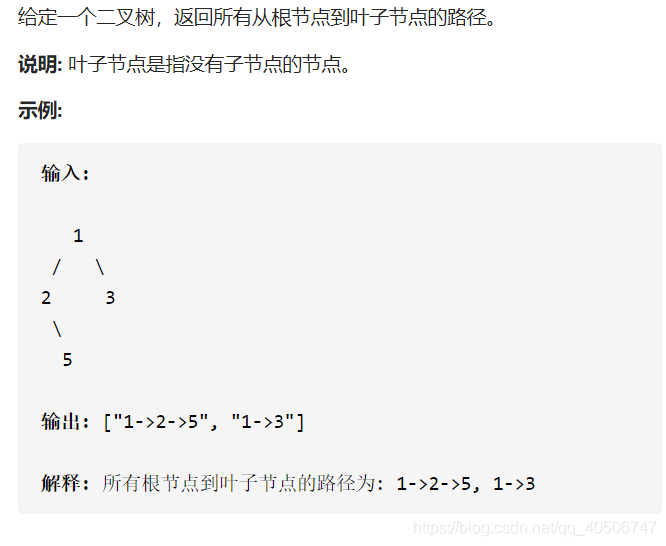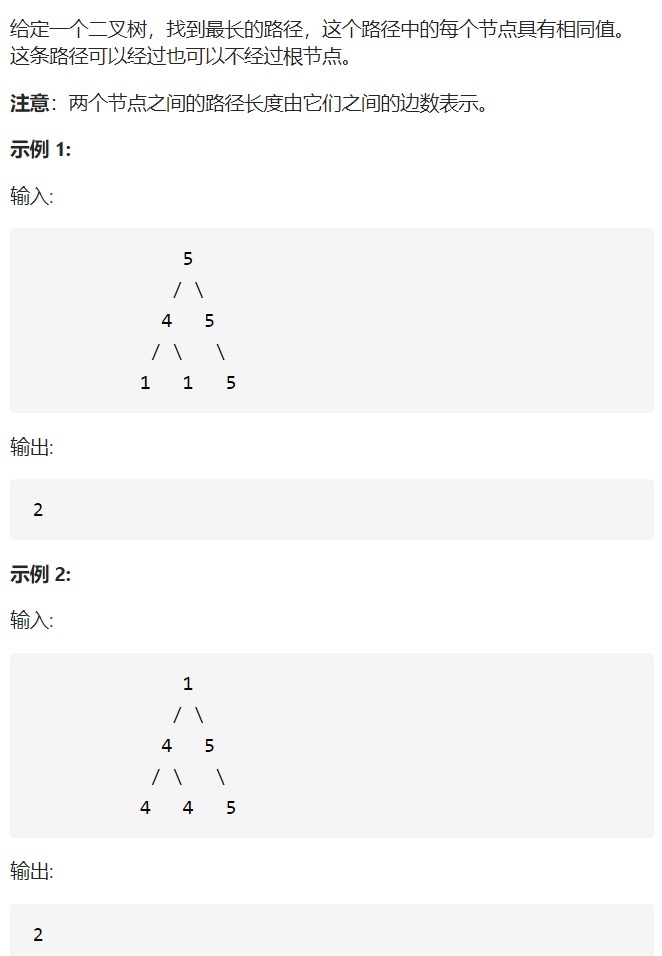leetcode-Tree
leetcode257

class Solution {
List<String> res = new ArrayList<>();
List<Integer> path = new ArrayList<>();
public List<String> binaryTreePaths(TreeNode root) {
getPath(root);
return res;
}
private void getPath(TreeNode root) {
path.add(root.val);
if (root.left == null && root.right == null) {
res.add(listToString(path));
}
if (root.left!=null)getPath(root.left);
if (root.right!=null)getPath(root.right);
path.remove(path.size()-1);
}
private String listToString(List<Integer> path) {
StringBuilder builder = new StringBuilder();
for (Integer integer : path) {
builder.append(integer).append("->");
}
builder.delete(builder.length() - 2, builder.length());
return builder.toString();
}
}
687. 最长同值路径

*题解:*递归函数的作用:当前节点的最长同值路径(左子树+右子树+当前节点)
因为当前节点的最长同值路径是由左右子树节点的和,所以采用后序遍历。
class Solution {
int res = 0;
public int longestUnivaluePath(TreeNode root) {
if (root==null)return 0;
longPath(root,root.val);
return res;
}
private int longPath(TreeNode root,int pre) {
if (root == null) return 0;
//计算左右孩子最长路径
int left = longPath(root.left,root.val);
int right = longPath(root.right,root.val);
int sum = left+right;
//当前节点最长路径更新ans
res = Math.max(res, sum);
//等于父亲节点值时,返回 max(左最长路径,右最长路径)+ 1
if (root.val==pre)return Math.max(left, right)+1;
//不等于父亲节点时,返回0
return 0;
}
}